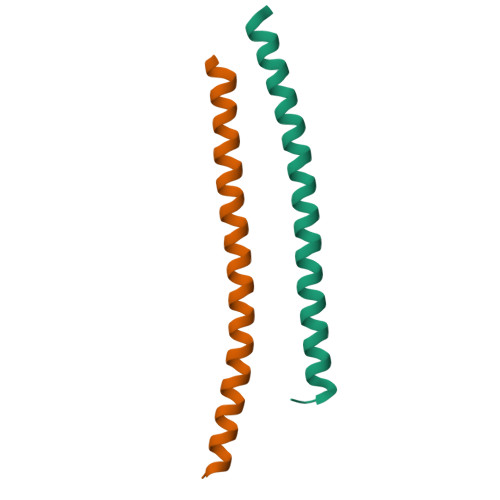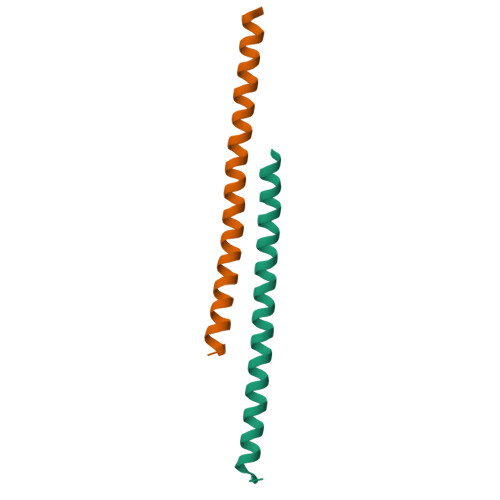The structure of human apolipoprotein C-1 in four different crystal forms.
McPherson, A., Larson, S.B.(2019) J Lipid Res 60: 400-411
- PubMed: 30559175
- DOI: https://doi.org/10.1194/jlr.M089441
- Primary Citation of Related Structures:
6DVU, 6DXR, 6DZ6, 6NF3 - PubMed Abstract:
Human apolipoprotein C1 (APOC1) is a 57 amino acid long polypeptide that, through its potent inhibition of cholesteryl ester transferase protein, helps regulate the transfer of lipids between lipid particles. We have now determined the structure of APOC1 in four crystal forms by X-ray diffraction. A molecule of APOC1 is a single, slightly bent, α-helix having 13-14 turns and a length of about 80 Å. APOC1 exists as a dimer, but the dimers are not the same in the four crystals. In two monoclinic crystals, two helices closely engage one another in an antiparallel fashion. The interactions between monomers are almost entirely hydrophobic with sparse electrostatic complements. In the third monoclinic crystal, the two monomers spread at one end of the dimer, like a scissor opening, and, by translation along the crystallographic a axis, form a continuous, contiguous sheet through the crystal. In the orthorhombic crystals, two molecules of APOC1 are related by a noncrystallographic 2-fold axis to create an arc of about 120 Å length. This symmetrical dimer utilizes interactions not present in dimers of the monoclinic crystals. Versatility of APOC1 monomer association shown by these crystals is suggestive of physiological function.
Organizational Affiliation:
Department of Molecular Biology and Biochemistry, University of California, Irvine, CA 92697-3900 amcphers@uci.edu.
















